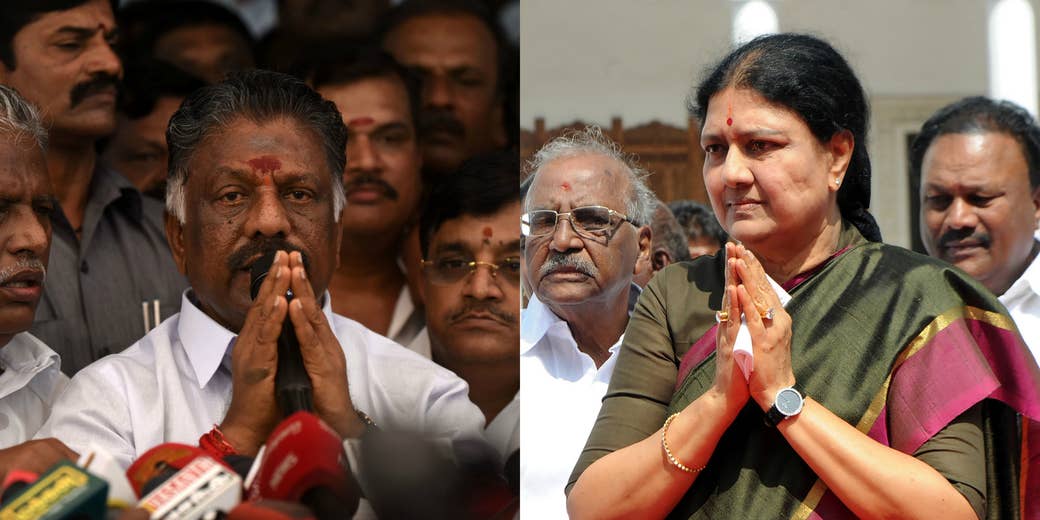
When I was young, I used to make a certain 2184 km train journey twice a year.
The Tamil Nadu Express would leave the then rather chaotic and squalid New Delhi Railway station (this was in the 90s) and 32 hours later, chug into Chennai Central after going through the Chambal valley, crossing the Narmada, Godavari, Krishna and finally stopping short of the Cooum river that flows (in a manner of speaking) into the Bay of Bengal just south of the gorgeously red Gothic Revival style railway station.
The term “Amit” describes a certain kind of North Indian cluelessness.
As it cut across the Indian subcontinent, both the landscape and language changed dramatically as Devanagari gave way to Telugu and finally Tamil.
And ever since a high school classmate once asked me, “Suna hai ki yeh Keral ka Madraasi alag bhasha hai?” (I've heard the Kerela's Madrasi is a different language?), North Indian cluelessness about anything beyond the Cow belt has always been hilariously fascinating.
In 2007, a musical co-conspirator and good friend Harish, coined the term “Amit” to describe a certain specific kind of North Indian cluelessness, a form of ignorant arrogance wrapped in exuberant overconfidence and dipped liberally in the ketchup of intolerance.
Amit Media was in full force during the Jallikattu protests.
And a little while back, Anamika and ShrinivasSG coined #AmitMedia, a corollary hashtag that describes and curates a form of journalism combining everything Amit stands for, along with a veritable thaali that includes misplaced liberalism, privilege-blindness and can't-be-bothered-to-Google recklessness.
Amit Media was in full force during the Jallikattu protests and more recently, during the real life political comedy show that was the just concluded Sasikala vs. O Panneerselvam battle.
So we’ve made a list of rules that Amit Media could consider following in the future to be less Amit and more media when it comes to reporting on any part of India that’s five feet outside their swanky Delhi and Mumbai offices.
Rule 1: It is possible, even in the alien landscape south of the Vindhyas, for two entirely different human beings to be named Sasikala.
One is Sasikala Pushpa, who is an MP who was expelled from the ADMK for slapping Tiruchi Siva, a DMK MP, and the other is Sasikala Natarajan, who till recently ran seaside resort services for MLAs.
And practically every media outlet has confused one for the other at least once.
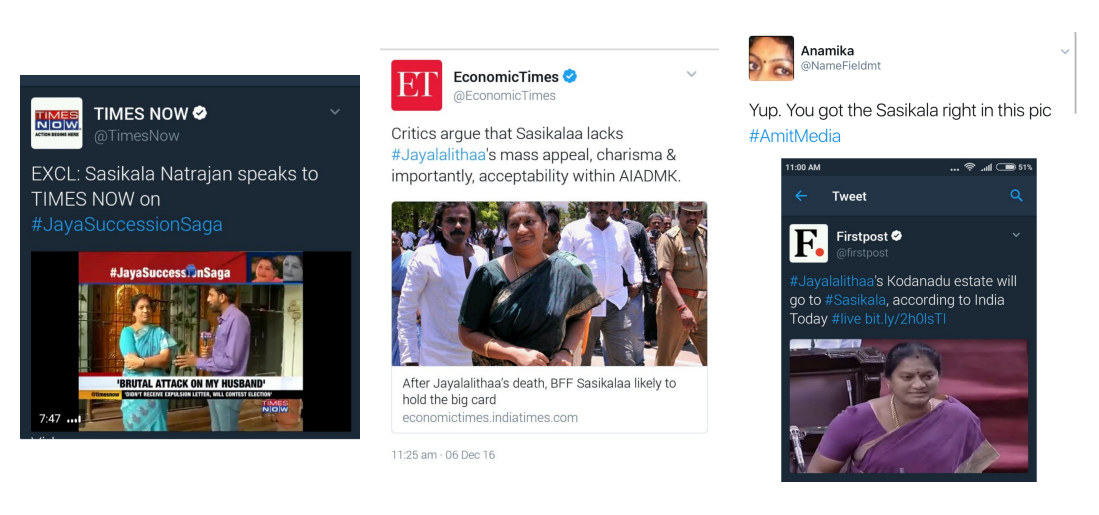
This is particularly astounding for a part of the world where every boy is named Amit and every girl, Neha.
They've got it wrong the other way around too.
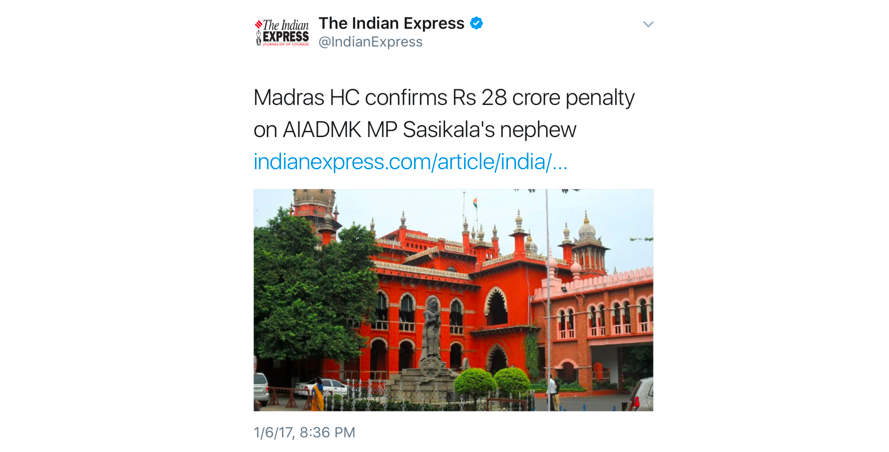
And Sasikala (not the MP), in addition to not having unnecessary “H’s” in her name, also does not have a son, and Rajaji (of the hall fame) used to be a Governor General while Raja ji was implicated in the 2G scam.
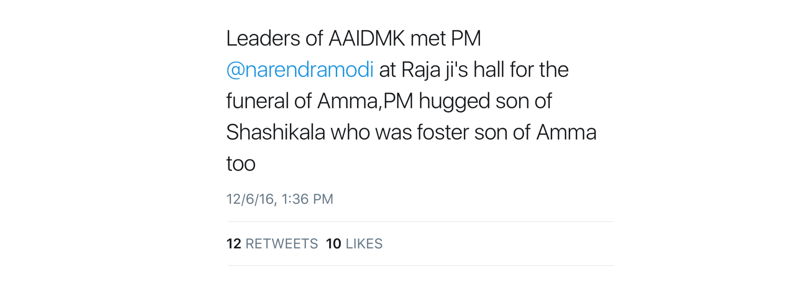
And oh, he hugged OPS, not JJ’s foster son, who is not the son of Sasikala, who is not the AIADMK MP.
Which brings me to a useful and related piece of information: it is possible to identify people you don’t know in photos by doing a reverse Google image search.
Rule 2: Even in a hyper-fast social media driven real-time breaking news world, it’s not hard to verify if someone is dead or alive.
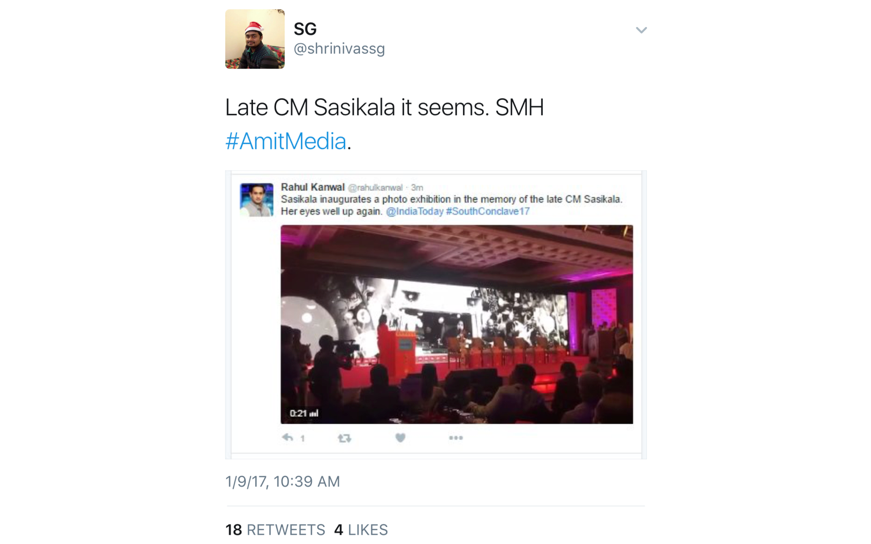
Both Sasikalas, the AIADMK MP who slapped the DMK MP and the MLA Fortress Resort operator, are quite alive. And neither of them is the CM. That would be O Panneerselvam.
Rule 3: All entities with the name template *MK are not the same
Human beings aside, it turns out Amit Media is still unable to accept that it’s possible for different flavours of political parties named MKs to co-exist in the same state.
There is a DMK, that was founded by Anna, an Anna-DMK, which was not founded by Anna, a PMK, which isn’t a Munnetra Kazhagam (but a Makkal Katchi) and a DMDK, which is run by someone called Captain, but isn’t actually a Captain, among other things.
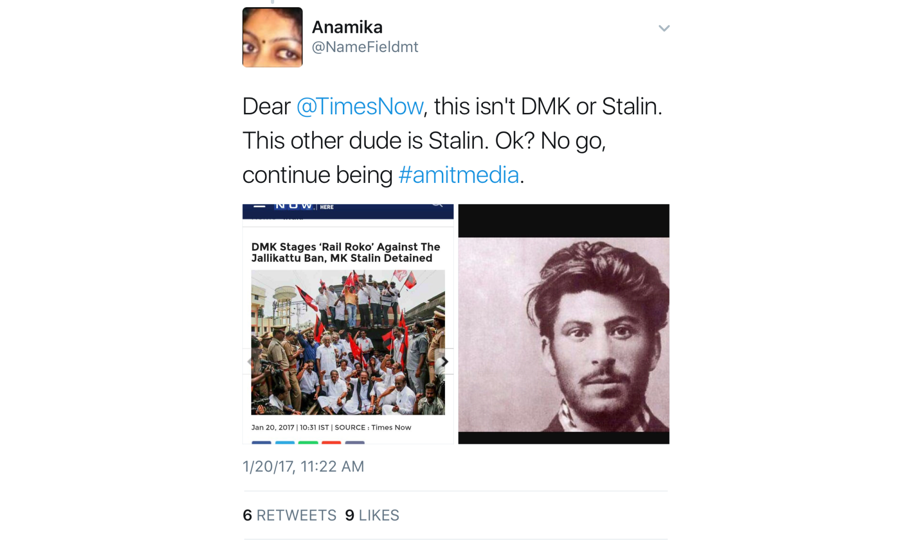
And oh, Stalin, not of the Josef variety, is from the DMK, not AIADMK. The guy on the left is not even from the DMK. He’s from the MDMK, which is not the same thing as the DMDK. Refer to Rule 3 (and don’t go into an infinite loop).
Rule 4: When making jokes, base them on premises that are remotely culturally accurate.
Paneer jokes. So here’s the thing. The best kind of humour (a.k.a South Indian humour) is built on a factually correct foundation. And cottage cheese is a terrible foundation for pretty much any dish.
But more importantly, the Panneer in Panneerselvam is not a cow udder based product. It means “rose water”, a rather auspicious kind of essence in Tamil Nadu.
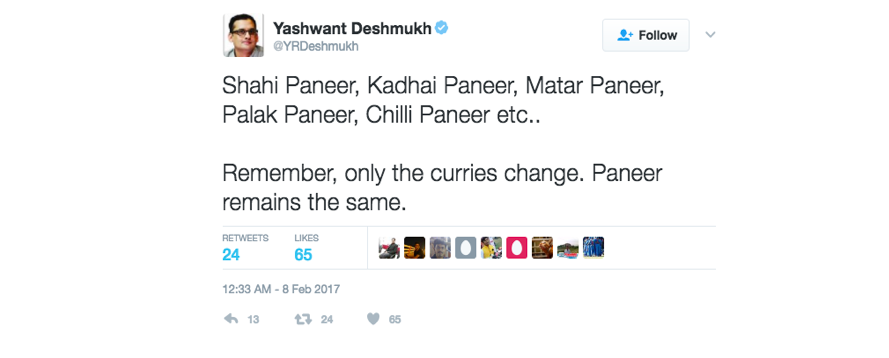
The next time you attend a wedding in Chennai, it’s likely that some smiling person at the reception will sprinkle some Panneer on you as you enter the venue. Congratulations, you’ve just been given the wealth (Selvam) of rose water (Panneer).
And if you want to join the OPS bandwagon, it might be a good idea to avoid calling him “Pig’s wealth”.
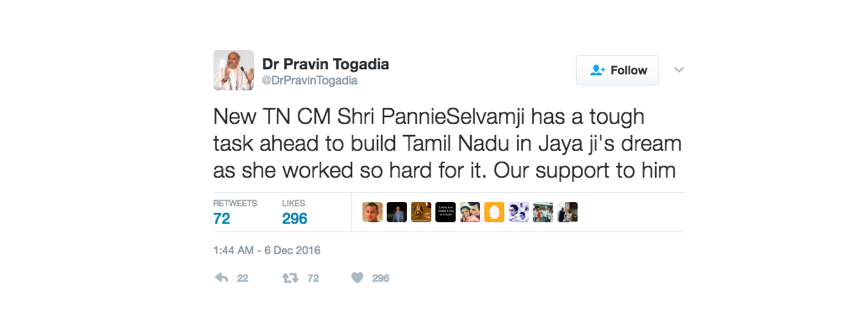
Rule 5: If you come up with a think piece trying to explain something in South India (or the West, East, or the North East), you are probably wrong.
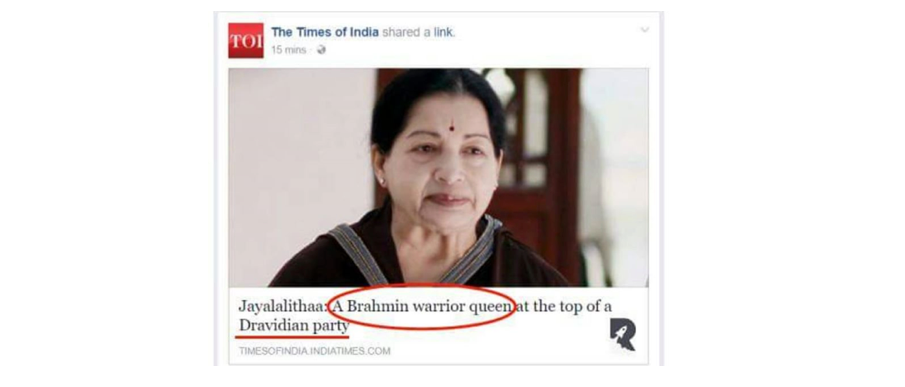
Imagine King Kong climbing atop the tallest building in your city with a megaphone the size of your overconfidence screaming “That’s not how things work here”. That.
And finally,
Rule 6: The allowable density of lame South Indian pop-cultural references per article is 1, not 2 per sentence.
If you write something like this, delete it, clear the recycle bin, format your hard disk and incinerate your computer with a laser cannon.
The rasam of realpolitik is bubbling in Dravida Nadu. While Chinamma Sasikala poses in Poes Garden, and Tamil pride is inflamed over the apex court’s strictures on jallikattu, who can deny the power of Tamil Nadu in India? Not only is Rajnikant India’s biggest star but from S Ramanujan to Viswanathan Anand to TN Seshan to C Rajagopalachari to RK Narayan to MS Subbulakshmi, Tamil Nadu rules on culture, brain power and political acumen. No wonder the impatient Tamil is forced to ask the north Indian, Tamil teriyuma? (Do you understand Tamil?), which to Hindi speaking people sounds like Tamil teri maa.
Yes, Teriyuma sounds like “Teri Maa”, and Vanakkam sounds like “wanna come” and Golden Hair Leaf sounds like Thanga Mudiyala, which means “just cannot able to tolerate ya”.

But hey, it’s easy to poke fun at a Delhi and Bombay centric “national media” whose understanding of India barely extends beyond their offices while missing the larger point here.
I belong to the exact same demographic that I’m ridiculing.
As the writer of this piece, I belong to the exact same demographic that I’m ridiculing.
I’m as clueless about what motivates people in villages to flock in droves to listen to their favourite politician and unerringly vote for him or her all the time.
I poke fun at the cinematic drama that is TN politics while shaking my head at a media outlet that fails to grasp that the people who worship Jayalalithaa as a god very likely owe their lives and livelihoods to the generous (albeit corrupt) welfare state that the Dravidian parties have built over the years.
Forget people from out of the state, urban, English-speaking Tamil people don’t realise that Jayalalithaa’s conviction by the Supreme Court will not tarnish her image among her base because many of them believe she amassed wealth but did good with it.
In India, there isn’t even a common or shared understanding of good and bad.
In India, there isn’t even a common understanding of good and bad.
And the amazing thing is that we can truly hold cognitively dissonant hypocrisies in our heads without breaking a sweat.
The old trope about “Unity in Diversity” is rather frayed at the edges now.
Two decades ago, when our entire view of the country was delivered in a crisp, convent-educated English accent of a Doordarshan News reader in a 20 minute news report, we were blissfully ignorant of our diversity beyond just that hazy belief that we were indeed diverse and if the news says we are united, we really must be. We are not.
We are (and have always been) messily diverse, across urban and rural divides, across class and caste, across linguistic and religious divides.
Anyone remember this clueless attempt to rebrand Onam? Yep, that state adores and worships an Asura king. Deal with it.

And this hyperconnected society, armed with smartphones, is an entirely different beast. Any attempt to homogenise, generalise, stereotype or miss the point will be ridiculed and meme'd mercilessly, in vernacular languages to boot.
The ignorance is now on full display. All. The. Time.
The people running the country in Delhi (from every party ever), the news channels breaking news all over the place and every single one of us have always been clueless and misinformed about the rest of India, but it just so happens that the ignorance is now on full display.
All. The. Time.
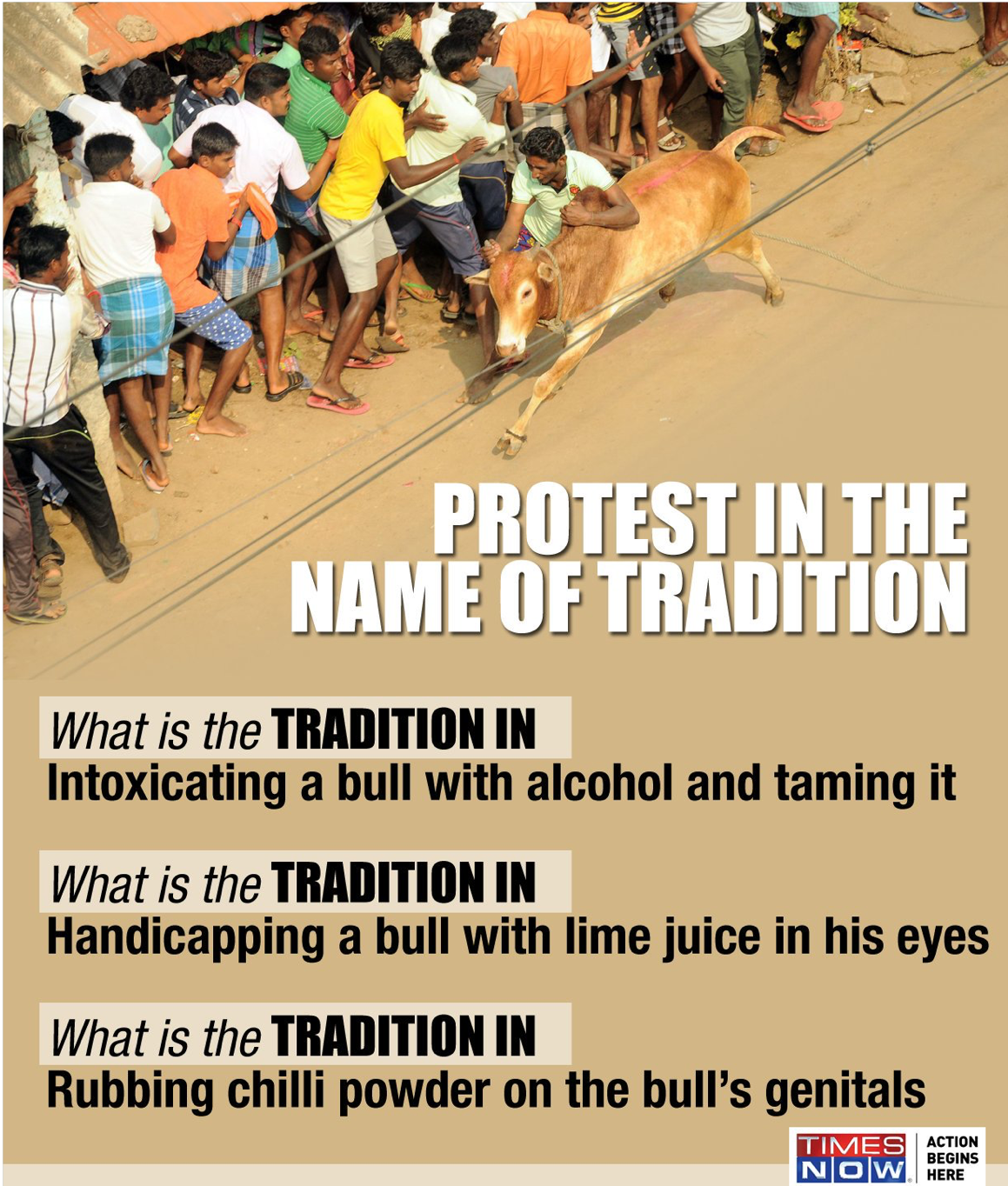
Unless governments and media outlets can hire precocious types that can speak six Indian languages fluently and understand subtle meme references from every corner of this country, this comical parade of misinterpretations and lack of cultural understanding will continue.
And people will get more and more of their news from WhatsApp forwards.
We are a complex and diverse mess.
I wish I could tell you to read local news in vernacular languages from every part of India to truly get a better picture but I can’t read or write Telugu that is spoken by a large number of people where I live, in North Tamil Nadu, let alone make any headway with Ananda Bazaar Patrika.
Maybe, a better way to look at it is to be deeply aware that we are a complex and diverse mess, perhaps even more so than the entire European Union, and maybe lose some of that exuberant overconfidence that we understand how things work in Arunachal Pradesh, Bastar, Kozhikode or Mannargudi.
Saying “I’m not really sure” more regularly is a good start.
We likely don’t even understand the political leanings and motivations of the guy who delivers our Amazon packages.
There really isn’t a solution to this. Perhaps saying “I’m not really sure” more regularly is a good start in the right direction.
I’ll leave you with some food for thought
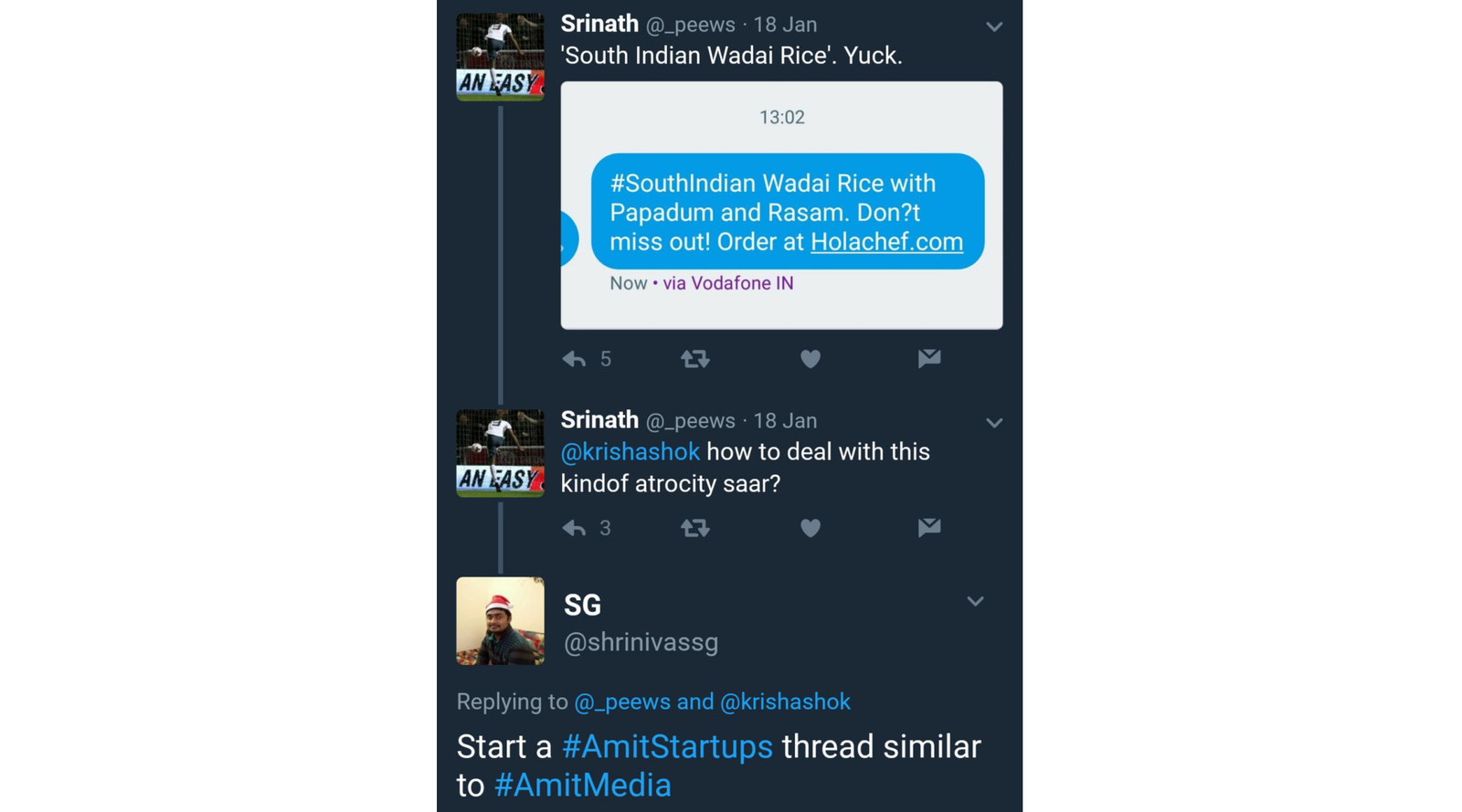
Errm, maybe not.

